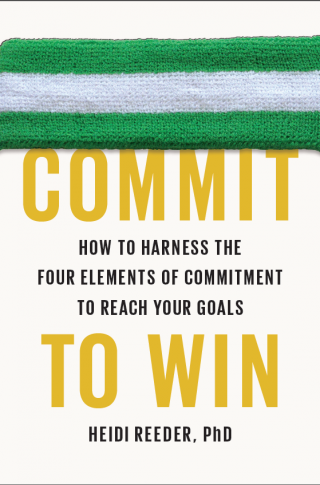Motivation
One Simple Strategy to Help You Achieve Your Goals
How to turn a human weakness into a strength.
Posted June 2, 2014

Shutterstock
One night my husband and I were watching "The Voice" on NBC as two singers competed to stay on the talent competition. Their fate was up to a single coach/judge who had worked with both contestants, but with one, Julio, longer than the other. The "newer" singer was far more talented—at least according to me, my husband, the other judges, and the viewers who had commented on NBC.com—but the coach/judge picked the inferior singer, saying, “I have so much time invested in Julio, I’ve got to go with Julio.”
This is an example of what behavioral economists and psychologists call the sunk cost fallacy. The “sunk cost” refers to time, money, or effort that has already been invested in an activity or project and cannot be retrieved, and the fallacy is that once we’ve made this type of investment we’re more likely to stay with a choice, even if it no longer benefits us or just wasn’t the best decision in the first place.
The sunk cost fallacy is considered a negative mental bias, and of course this is often true, like when you hang on to a continually declining stock, or, at some future date, force yourself to listen to Julio’s first album because you already purchased it for $16.99. (Apologies to Julio—he was good, just not the best choice...)
But is it possible to utilize the influence of sunk costs to our benefit?
We know that sunk costs increase the chances we’ll stay with a decision, whether that decision is good or bad. A strategic person might see this as an opportunity: Perhaps we can learn to use the power of sunk costs to increase the chances of sticking with something that matters.
Let’s say you have a certain goal—to write a book, finish college, or get regular exercise. You can strengthen your commitment to sticking it out by making regular investments that can’t be retrieved. You might invest time into an ongoing writer’s group. You might invest effort in developing strong relationships with professors who will hold you accountable. Or you might commit money to a strength-training class with like-minded friends. Where your investments go, your commitment will grow—and this can be used to your advantage.
Of course, as anyone who’s ever purchased expensive at-home exercise equipment knows, we can tend to forget about our investments over time. You use your Bowflex daily when it first arrives, in part because you are very aware of the cost you incurred. But over time, as your investment becomes less salient, that expensive piece of equipment gradually becomes a very bulky coat rack. That’s why it’s important to continue investing the right way—the way that best insures you’ll stick with it. Think it through carefully, and be aware that a one-time investment won’t help you stick with goals in the same way that continual investments will. It may be better to find a way to keep your investment at the front of you mind—for example, by choosing a rent-to-own option for equipment in which you’re shelling out $47 every week (and getting a reminder that puts the investment at the front of your mind).
Sunk costs don’t have to be negative. They can be a powerful, positive part of committing to your goals. The more time and energy you give to something meaningful, the more determined you’ll be to follow through. This instinct is innate in all of us, so use it to your advantage.

Heidi Reeder, Ph.D. is the author of COMMIT TO WIN (2014, Hudson Street Press/Penguin), available at Amazon.com and wherever books are sold.
She can be found on Twitter, Facebook, and at www.heidireeder.com.


